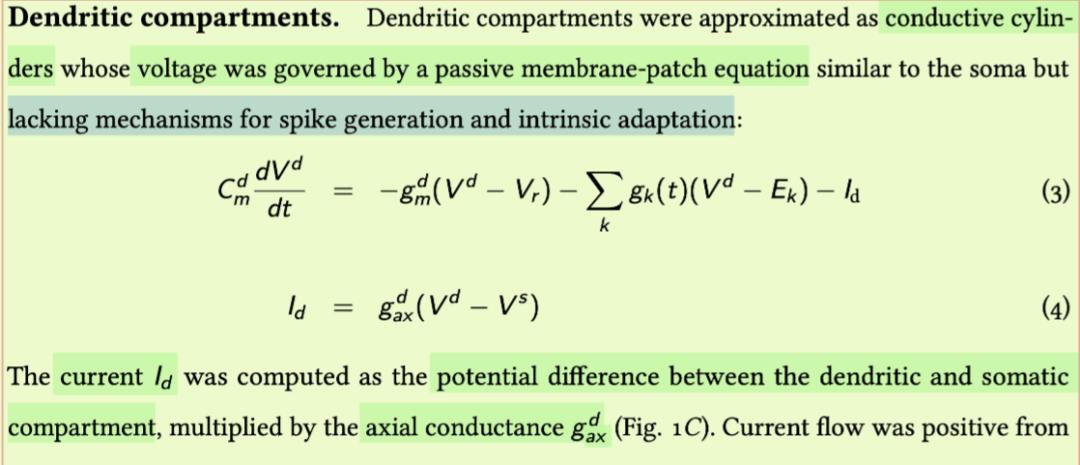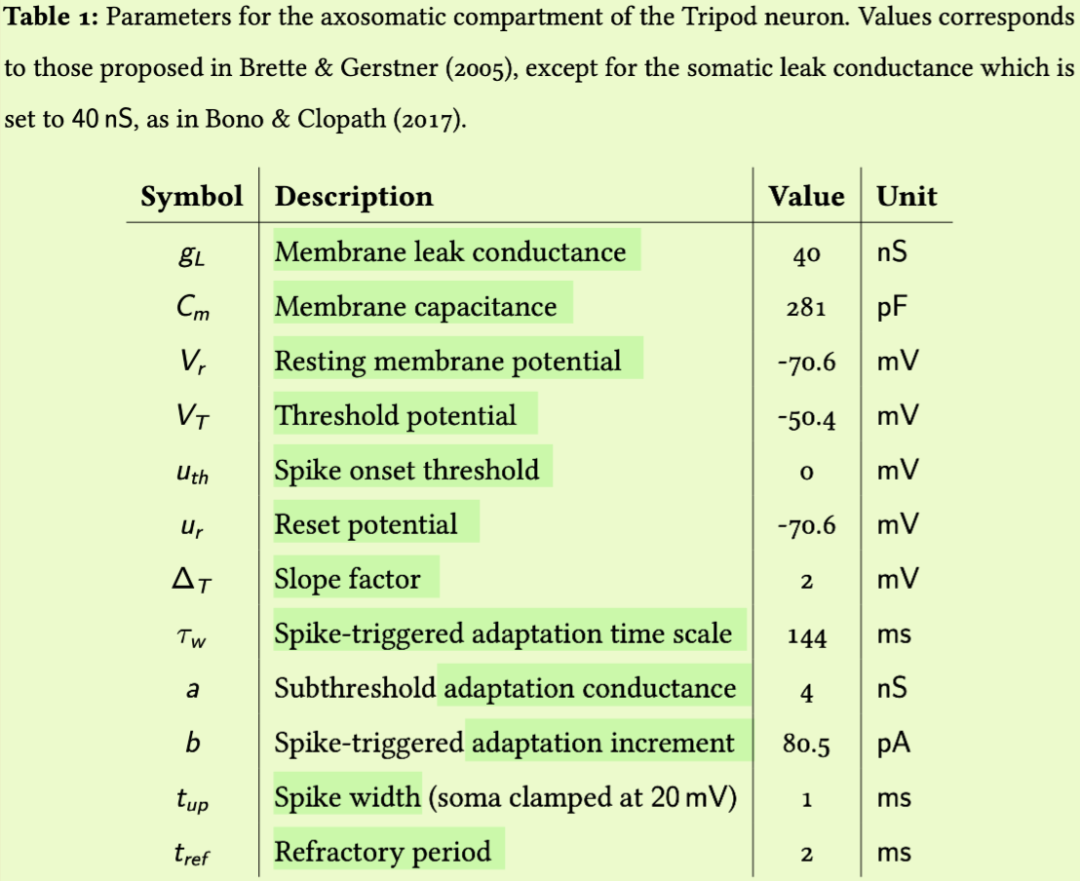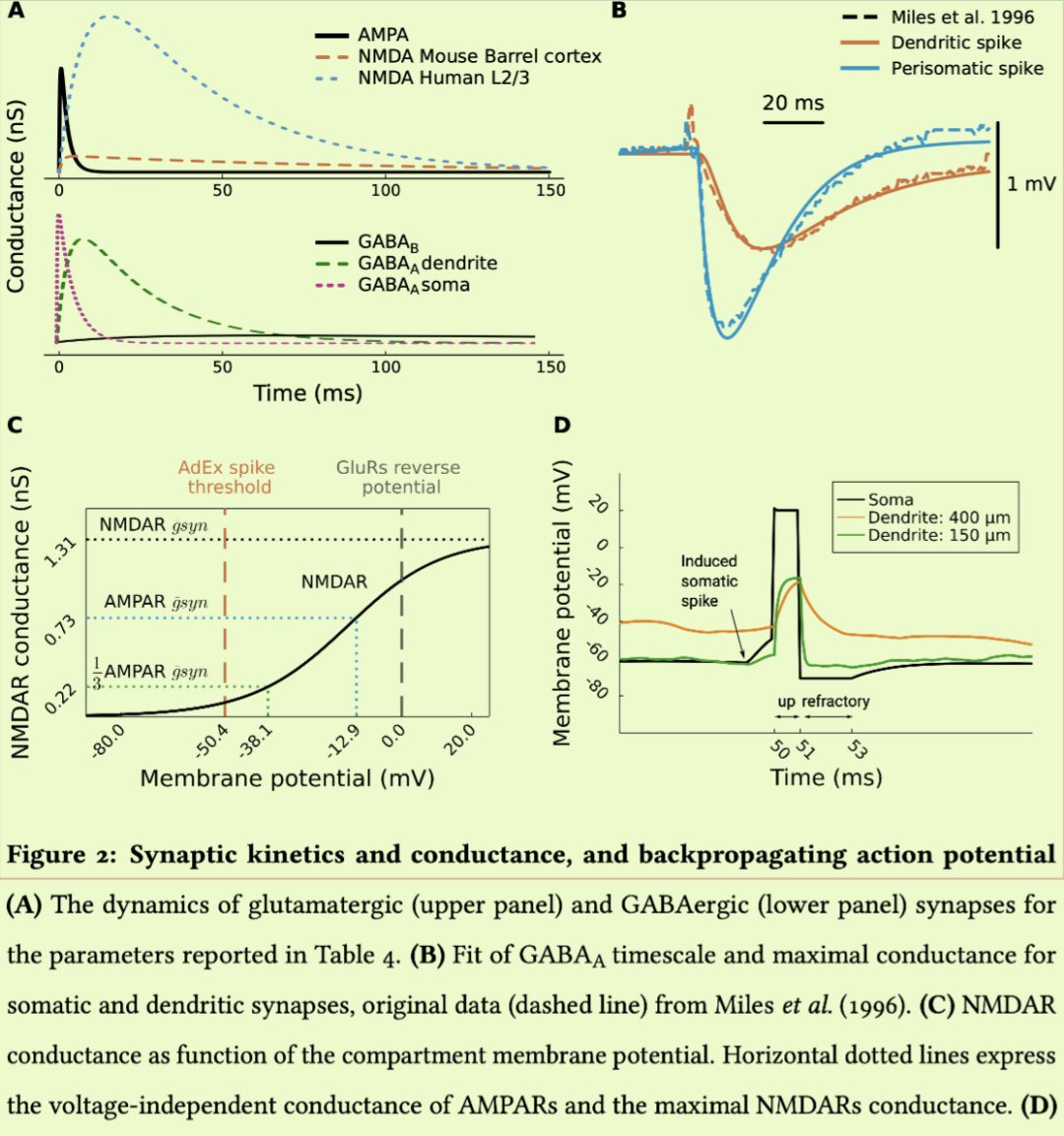人、鼠神经细胞差异对比 及神经元计算建模
人、鼠神经细胞差异对比 及神经元计算建模
神经元更完整的计算建模:
fast and slow
excitatory and inhibitory
short and long dendrites.

人、鼠 认知神经细胞差异对比


paper:The Tripod neuron: a minimal structural reduction of the dendritic tree
Abstract
Neuron models with explicit dendritic dynamics have shed light on mechanisms for coincidence detection, pathway selection, and temporal filtering. However, it is still unclear which morphological and physiological features are required to capture these phenomena. In this work, we introduce the Tripod neuron model and propose a minimal structural reduction of the dendritic tree that is able to reproduce these dendritic computations. The Tripod is a three-compartment model consisting of two segregated passive dendrites and a somatic compartment modeled as an adaptive, exponential integrate-and-fire neuron. It incorporates dendritic geometry, membrane physiology, and receptor dynamics as measured in human pyramidal cells. We characterize the response of the Tripod to glutamatergic and GABAergic inputs and identify parameters that support supra-linear integration, coincidence-detection, and pathway-specific gating through shunting inhibition.
Following NMDA spikes, the Tripod neuron generates plateau potentials whose duration depends on the dendritic length and the strength of synaptic input. When fitted with distal compartments, the Tripod neuron encodes previous activity into a dendritic depolarized state. This dendritic memory allows the neuron to perform temporal binding and we show that the neuron solves transition and sequence detection tasks on which a single-compartment model fails. Thus, the Tripod neuron can account for dendritic computations previously explained only with more detailed neuron models or neural networks. Due to its simplicity, the Tripod model can be used efficiently in simulations of larger cortical circuits.
Methods
The Tripod neuron model



Synaptic dynamics.
For synaptic transmission we considered the principal receptors concerning excitation and inhibition, including two glutamatergic receptors with fast (AMPA) and slow (NMDA) dynamics, and two GABAergic receptors with short (GABAA) and long (GABAB) timescales. Each receptor was modeled as a conductance with double-exponential kinetics (Roth & van Rossum, 2009):


https://github.com/aquaresima/tripod_neuron.
Results:
完整论文请阅读原文